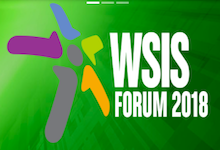Saudi vision 2030 and the future smart education
22 Mar 2018 09:00h - 10:45h
Event report
[Read more session reports from the WSIS Forum 2018]
The country workshop was focused on the work carried out towards smart education in Saudi Arabia, and developments through digital technologies in order to meet the sustainable development goals (SDGs), and the World Summit on the Information Society (WSIS) requirements.
Mr Houlin Zhao, secretary-general of the International Telecommunication Union (ITU) opened the panel by expressing thanks for the Saudi Arabian financial support of the WSIS Forum. Zhao stressed the importance of connecting people who are not yet connected and bridging the digital divide worldwide. He said that in recent years he has had the opportunity to visit the Central African Republic, Guatemala, Tonga, Palestine, and Gaza, and realised that people are either not connected, or poorly connected. Schools do not provide, or have access to, the Internet. There is the political will to implement fibre optics in these places, but there are not enough investors interested in supporting initiatives. Connecting schools is one of the main goals of the ITU, and Zhao hoped that the example of Saudi Arabia will be expanded to other places.
Dr Talal H. Maghrabi, general supervisor, electronic services, Ministry of Education, Saudi Arabia, shared the Saudi ministry’s education initiative, running up to 2030. The government aims to implement digital transformation in schools, and wants schools to shift completely to a technological environment. The goals are to create an enjoyable educational setting, to transform traditional schools, and to empower students with technology before the university level.
According to Maghrabi, the advantages of digital learning are flexibility, decentralisation of teaching, time saving, and the reduction of paperwork.
The project is divided in 3 phases: from 2018-2020, 150 schools will be included, allowing the evaluation of the project. In phase 2, more than 150 schools will be included. In phase 3, the plan is to have 2000 schools completely integrated to the project.
The project encompasses three groups of stakeholders: students, parents, and teachers. The students should be able to access content, agenda, and grades; parents should be able to check reports, and communicate with teachers and administrators through an online platform. Teachers should be prepared to use and manage the platform. The challenges to implement the technological shift in schools are related to training teachers and staff; connectivity – even though all schools have connectivity, they are slow in some parts of the countries; and finally, to integrate the old system of education into the new one.
In terms of achievement, the infrastructure to connect schools to the Internet is now consolidated: laptops have been distributed to teachers, and technical support is already provided. Maghrabi reviewed some statistics: 700 000 stakeholders are involved in the project; 9000 teachers are aware of developments; the ministry has accomplished 3000 field visits; 2000 technical support staff have been provided; 4000 virtual lessons are available; and 3700 interactive sessions have taken place. He concluded by saying that the project is entirely sponsored by the government, and the main challenge remains in offering high-speed connectivity to schools.
Mrs Mansour S. Al Qurashi, director, international strategy and negotiations, CITC, presented the portal dedicated to education in Saudi Arabia. The idea is to encourage students to innovate and create. Many topics are available in the portal, including medicine, mathematics, and engineering. The content is available only in Arabic and is designed according to Islamic standards.
By Ana Corrêa
Related topics
Related event

